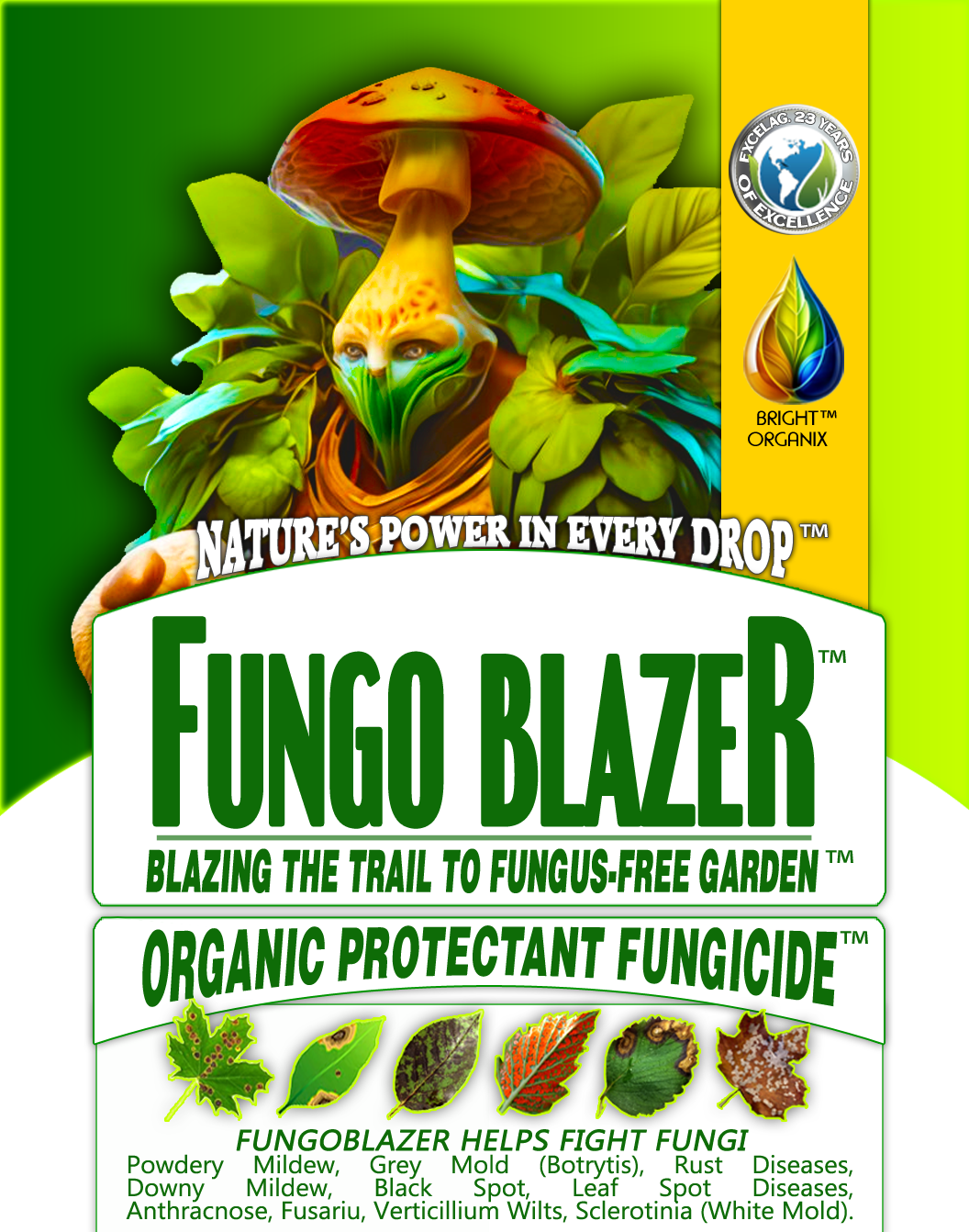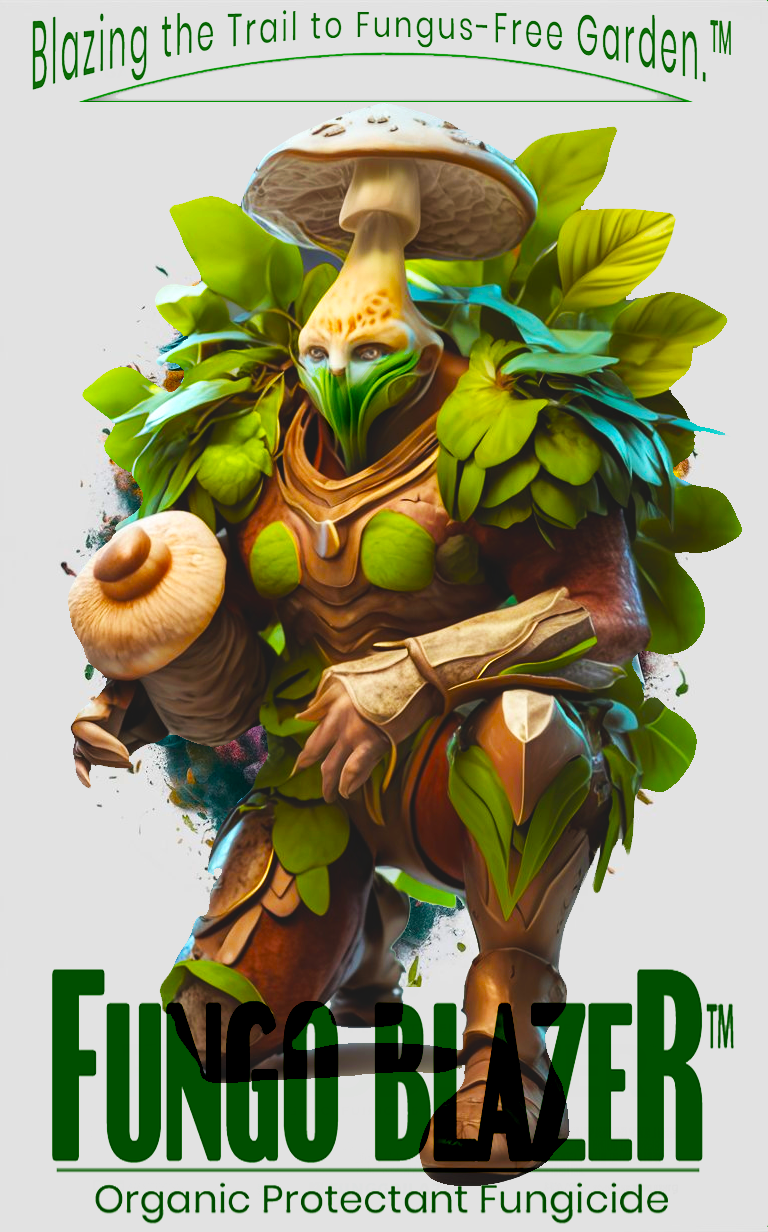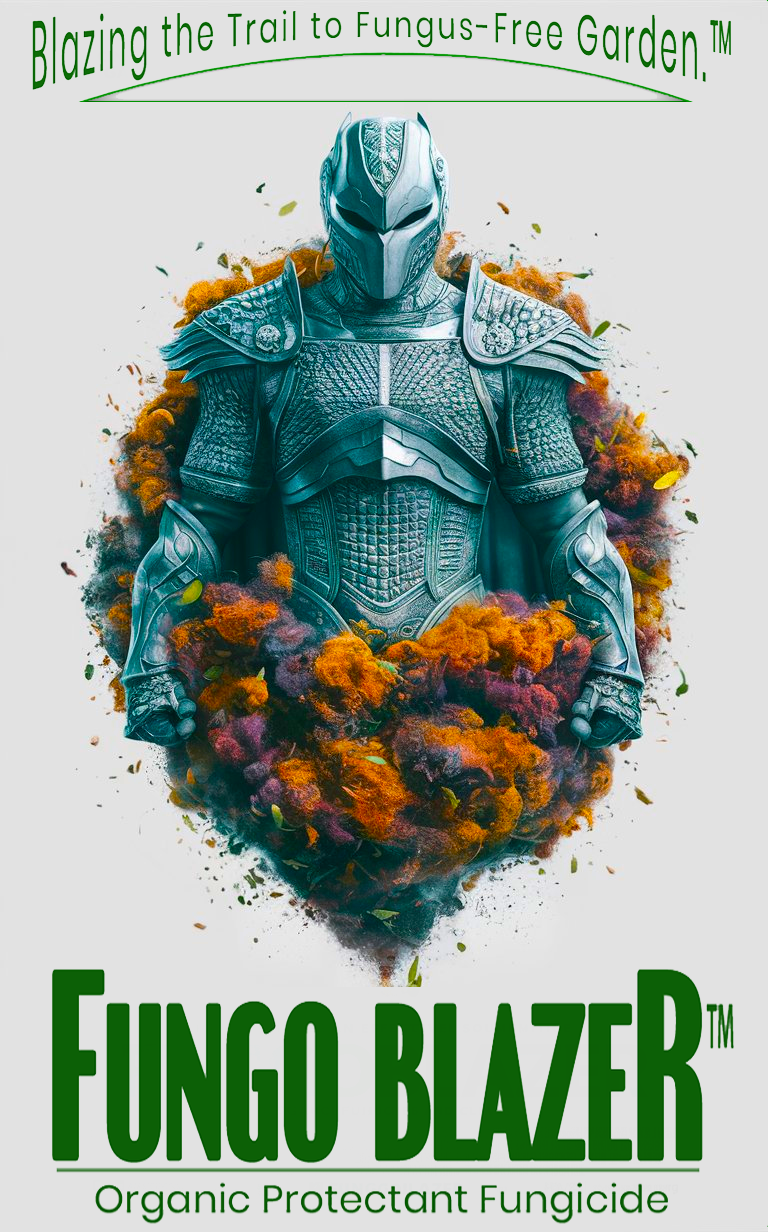Powdery Mildew
FUNGOBLAZER™️:
**Powdery Mildew** is classified as a plant disease. Here is detailed information about it:
– **Category**: Disease (pathogen)
– **Description**: Powdery mildew is a fungal disease caused by a variety of species in the order Erysiphales, with common genera including Erysiphe, Sphaerotheca, and Podosphaera. It affects a wide range of plants, including vegetables, fruits, ornamentals, and grains. The disease is characterized by the appearance of white or gray powdery spots on the surfaces of leaves, stems, and sometimes fruits. Unlike many other fungal diseases, powdery mildew thrives in dry, warm conditions with high humidity.
– **Impact**: Powdery mildew can cause significant damage to plants, leading to reduced vigor, stunted growth, and lower yields. The fungal infection can:
– **Reduce Photosynthesis**: The powdery fungal coating blocks sunlight, reducing the plant’s ability to photosynthesize.
– **Weaken Plants**: Infected plants may become weak and more susceptible to other diseases and pests.
– **Affect Quality and Yield**: In crops like grapes and cucumbers, powdery mildew can affect the quality and marketability of the produce.
– **Cosmetic Damage**: For ornamental plants, powdery mildew can significantly reduce their aesthetic value.
– **Control Methods**: Managing powdery mildew involves cultural practices, biological control, and chemical treatments:
– **Cultural Practices**:
– **Proper Spacing**: Ensure adequate spacing between plants to improve air circulation and reduce humidity around foliage.
– **Watering Practices**: Avoid overhead watering to keep leaves dry. Water plants at the base to reduce humidity.
– **Pruning**: Regularly prune plants to remove infected parts and improve air circulation.
– **Resistant Varieties**: Plant resistant or tolerant varieties when available.
– **Sanitation**: Remove and destroy infected plant debris to reduce sources of fungal spores.
– **Biological Control**:
– **Beneficial Microorganisms**: Use biocontrol agents like Bacillus subtilis, which can suppress powdery mildew.
– **Chemical Control**:
– **Fungicides**: Apply fungicides such as sulfur, potassium bicarbonate, neem oil, or horticultural oils. These should be used as a preventive measure or at the first sign of infection.
– **Organic Options**: Use organic fungicides approved for use in organic gardening, such as those containing sulfur or copper.
In summary, **powdery mildew** is a significant plant disease caused by various fungal species. Effective management requires an integrated approach that includes cultural practices, biological control, and chemical treatments to minimize the impact of the disease and maintain plant health.
-
FungoBlazer Organic Eco-friendly Fungicide, a natural Guardian that tackles a wide range of fungal adversaries like Powdery Mildew, Grey Mold (Botrytis), Rust Diseases, Downy Mildew, Black Spot, Leaf Spot Diseases, Anthracnose, as well as tougher foes such as Fusarium, Verticillium Wilts, and Sclerotinia (White Mold). With FungoBlazer Organic eco-friendly Fungicide. Its organic formulation, enriched with Cinnamon and Clove Oils, provides a safe and eco-friendly solution, ensuring your garden thrives in a healthy environment.
By integrating FungoBlazer Organic Fungicide into your regular garden maintenance routine, you can effectively manage these fungal diseases and ensure your plants remain healthy and vibrant. Its organic, eco-friendly formulation makes it a trusted choice for sustainable gardening practices. FungoBlazer Organic Eco-friendly Fungicide revolutionizes fungal control in gardens, offering a potent defense against various fungal adversaries. With its innovative formula, FungoBlazer emerges as a trailblazer in the quest for fungus-free gardens. By targeting common fungal threats such as powdery mildew, grey mold, and rust diseases, FungoBlazer ensures plants thrive in a healthy environment. Moreover, its organic composition sets a new standard for eco-conscious gardening practices, aligning with the growing demand for sustainable solutions. Transitioning seamlessly between its diverse capabilities, FungoBlazer stands as a reliable guardian for gardeners seeking effective, environmentally friendly fungal control.
Mixing Instruction
- For the Ready to use (RTU) version of FungoBlazer just apply Spray directly over plants that needs to be treated.
- For the concentrate version of FungoBlazer, mix 0.5 to 1.0 ounces per gallon of water to treat your garden, patio, or lawn.32 oz container will produce 32,000 sqft to 64,000 sqft., 1 Gallon container will produce 128,000 sqft to 256,000 sqft. For RTU containers Spray directly over insects or around areas to protect. Shake well before use. Wash hands after application to avoid ingestion. Apply the product to affected areas, covering both the tops and undersides of leaves for optimal results. Reapply every 7-14 days, depending on pest severity and environmental conditions.
- SHAKE OR AGITATE THOROUGHLY BEFORE USE. Avoid prolonged storage of excess formulation in application equipment. FungoBlazer concentrate can be dilute in water or can be diluted in oil.
Size : 1 Gal RTU - 32oz RTU - 16oz CTU



